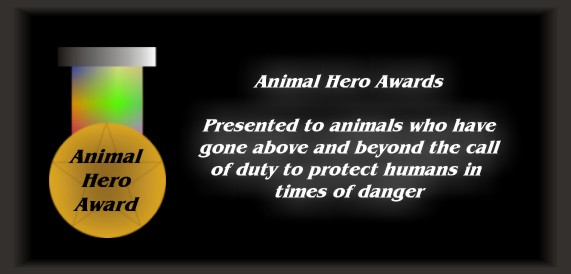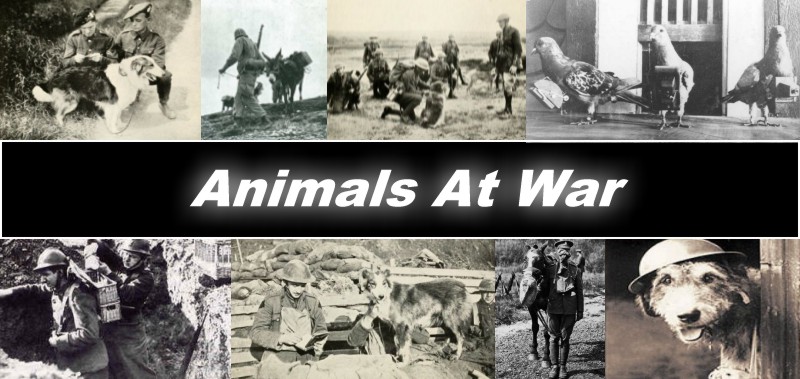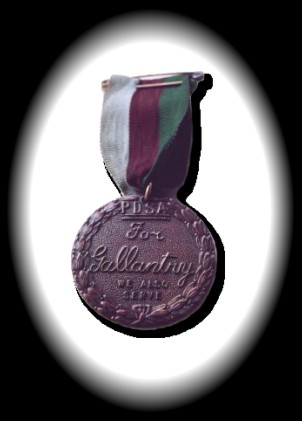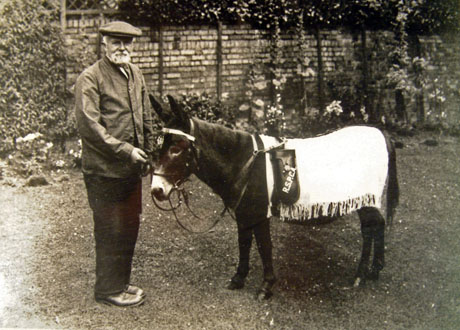
Inspite of our sometimes callous indiference towards them there have been periods in history when the assistance of animals has proved to be invaluable to humans, without them many lives would have been lost. There can be no better example of this than the 1st and 2nd World Wars

During the first world war man made communications were still crude and unreliable so dogs and pigeons were used instead. Pigeons could be found anywhere on the western front
In the heat and disorientation of battle pigeons proved to be the best way of sending messages to French headquarters. At the First Battle of the Marne in 1914 French troops advanced and pushed back the Germans, as they advanced their pigeons advanced with them stopping the German advance on Paris
At the Marne the French had 72 pigeon lofts which they took with them as they advanced. many of the pigeons would have been "on duty" when their lofts were moved but incredibly all of the pigeons at the Marne managed to return to their lofts despite "flying blind" not knowing where their loft was!
A pigeons great strength was not only it's amazing homing instincts but also the great speeds at which it flew. It would have been almost impossible to shoot one down. A pigeon could always get through. The only way for the enemy to counter them was to bring birds of prey. A marksman could most certainly not bring down a pigeon, but a falcon could
Dogs also played a vital role in communication during the first world war. They were often used as messengers and proved to be as reliable as soldiers in the dangerous job of delivering messages. The dogs were more likely to get their messages through as they were smaller and lighter, not weighed down by a heavy uniform. As well as this they would present a smaller target for a sniper. The dogs were able to run faster than humans and could cover any terrain. As well as this the dogs were able to offer the soldiers some small comfort from the horrors around them as well as perhaps a small reminder of life at home
Horses were mainly used as a form of transport during the first world war. They took part in a cavalry attack near Mons in August 1914, Britains first conflict of the war
In August 1914 when war broke out in Western Europe, Britain and Germany each had a cavalry force of about 100,000 men. These men would have needed a significant number of horses. Most senior military personnel at this time believed in the supremacy of the cavalry attack. The cavalry regiments ruled supreme as no-one could have contemplated the horrors of trench warfare
About 250,000 homing pigeons were used by the United Kingdom during the 2nd World War. 32 pigeons received the Dickin Medal, the highest possible animal's decoration for valour, including the United States Army Pigeon Services G.I. Joe and Irish pigeon Paddy
Some of the decorated war pigeons were:
.Commando (1944)
.G.I. Joe (1946)
.Paddy (1944)
.William of Orange (1944)

Opdate: 25th March 2012
Jimmy the hero donkey

A brave donkey who saved wounded troops in the killing fields of the first world war is being given a place of honour in his regimental museum
Jimmy the Sergeant served for two years on the front line with the Cameronian Rifles, working under fire despite being wounded three times
Jimmy is now set to feature in an exhibition at the Cameronians Museum in Hamilton when it reopens on the fourth of April after refurbishment
War historian Sam Morrell, a member of the regimental association said, "he is a big part of the Cameronian history and we want to make sure he is never forgotten"
Jimmy joined the Cameronians as a foal when his mum was mortally wounded by shellfire as she gave birth to him on the Somme in 1916. The Scots took him back to their trench and raised him themselves, feeding him on condensed milk and he grew to become a vital member of the unit, carrying equipment and supplies as well as taking wounded soldiers to safety
Sam 72, said, "Jimmy was injured three times by shell debris but he recovered each time"
Jimmy was made an honorary sergeant with three stripes on his bridle, and learned to raise his hoof to salute his comrades
Sam said, "He was a clever animal and played an important part in keeping up the morale of the troops, even if he just acted as a distraction from the horror of what was around them. He gave them something else to think about rather than whether or not they would be killed. It is only right that he is recognised by the Hamilton museum"
Jimmy was demobbed with the rest of the Cameronians at the end of the war. And in 1920, he was taken to Peterborough, in Cambridgeshire, where the regiment were based for a short time before returning to Scotland. He was sold to a local woman in a charity auction before the soldiers went home
He lived happily for another twenty-three years, raising thousands of pounds for charities including the RSPC by appearing at events and giving rides to children
Jimmy eventually died in 1943 and was buried in Peterborough's Central Park. A monument was built in his honour and his grave was restored in 2003 as a tribute to his service



